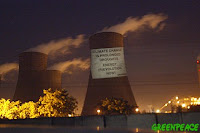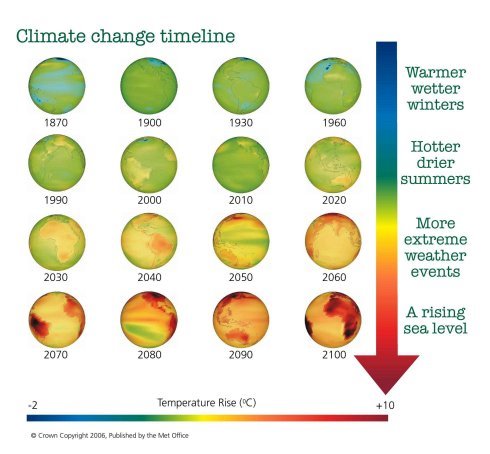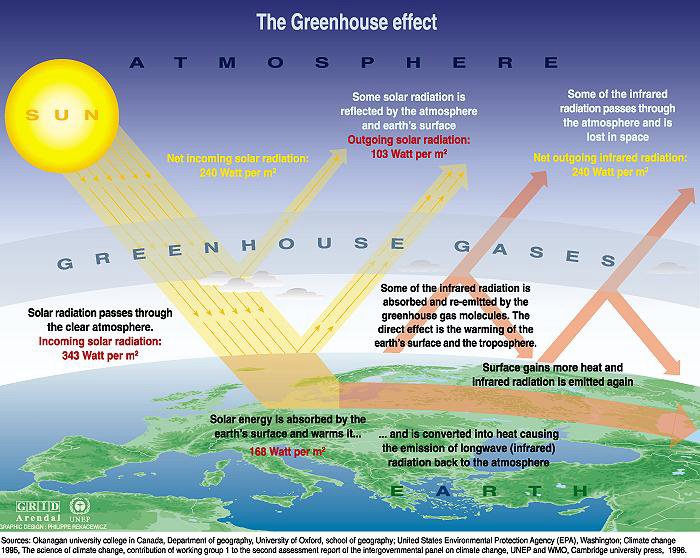It is well known that the Bush Administration refused to pay for repairs to the New Orleans levies, resulting in mass death and homelessness when Hurrican Katrina struck and then bungled the disaster relief effort. Less well known is that the hurricane's intensity was a result of global warming (although Gore alluded to this in An Inconvenient Truth):
"Global warming accounted for around half of the extra hurricane-fueling warmth in the waters of the tropical North Atlantic in 2005, while natural cycles were only a minor factor, according to a new analysis by the National Center for Atmospheric Research (NCAR). The global warming influence provides a new background level that increases the risk of future enhancements in hurricane activity. The study appears 27 June in Geophysical Research Letters, published by the American Geophysical Union. global warming related disaster
Since the disaster, hundreds of billions of dollars have been slated for the war in Iraq but almost nothing for public housing in New Orleans. Tenants who tried to get into a City Council meeting to stop the demolition of existing housing were met with tasers.

"What’s at stake is the bulldozing of 5000 homes, or what politicians and reporters euphemistically call “units”, of public housing. These units, some moderately damaged, some unimpacted by Katrina, have been neglected by government for decades, but nonetheless were homes for some of New Orleans neediest and most disenfranchised people before the storm. Since the storm, rent prices are up by 50% and the homeless population is far larger than pre-storm levels.
"After nearly 2 and half years of all types of neglect and abuse toward survivors of a global warming related disaster this has become a hugely symbolic battle against the ethnic cleansing of New Orleans. And it has been the last straw for many of New Orleans’s most oppressed people." - from It's Getting Hot in Here.
Further commentary:
When Katrina hit on August 29, 2005, there were 5200 families living in apartments administered by the Department of Housing and Urban Development (HUD). There were an additional 2000 low-income public housing apartments that were temporarily vacant at the time of Katrina because they were scheduled for renovation. HUD took control over the Housing Authority of New Orleans (HANO) years before Katrina. HANO is under HUD Administrative Receivership.
Since HUD’s takeover, HANO has had a one person board that makes all decisions. The one person HANO board is a HUD employee. That person selects all personnel and approves all contracts. HANO’s annual budget has been about $125 million annually.
The current 4605 low-income public housing apartments will be the replaced by 744 low-income public housing apartments. That results in a loss of 3,861 low-income public housing units – or 82%. Even including the market rate and mixed income apartments – there is a total loss of 2,764 apartments to New Orleans. The $762 million spread over the 1841 apartments comes to well over $400,000 per apartment. So, HUD’s plan is to spend three-quarters of a billion dollars to reduce public housing in New Orleans by 82%.
See Justice for New Orleans,
SACC commentary: This is surely a taste to come of the climate injustice that the most wealthy Americans have planned for the poor. Already, three years ago the Pentagon came out with a report on climate change, which tellingly advised Washington to build up its security against boatloads of refugees, but did not advise that Washing mitigate the actual causes of climate change (which of course include the military!).
_________________________
Canada aboriginal communities oppose open-pit mining
Meanwhile, things are not much better in Canada; climate injustice and racism are occuring every day among land claims slated for development. The tar sands fight and Sharbot lake uranium mine are two key examples.


Tar sands and First Nations
Many First Nations communities are adversely affaected by the tar sands. Among them, the Dene, Cree and Metis.
Grand Chief Herb Norwegian of the Dehcho First Nations, called on Canada and Alberta to support a moratorium on further development of the massive oil producing Athabasca Tar Sands “until some sanity can be brought into this situation.” Source.
The Woodlands Cree First Nations takes legal action agains the Alberta government over tar sands development.
_______________________________
Uranium Minining in northeastern Ontario
For an introduction to the issue see Algonquin Resist Uranium Mine Also see Raging grannies video of their visit to Donna Dillman at the beginning of her hunger strike; and fascinating amateur protest video on Youtube by uranium mine protesters. Here is a NIMBY site against the uranium mine: No Uranium Mine with lots of info.
Two First Nations communitiesare countersuing the mining corporation and government: "Two First Nations communities have launched a $1-billion lawsuit against the province and a $10-million countersuit against a mining exploration company that is suing them for blocking access to a potential uranium mining site in eastern Ontario. The Ardoch and Shabot Obaadjiwan Algonquin First Nations allege that Ontario breached their aboriginal rights and failed to consult them before granting a company mining rights to land they say belongs to them. The land is located near Sharbot Lake, about 60 kilometres north of Kingston. The countersuit against Frontenac Ventures is intended to send a message to the company that launched its own $77-million lawsuit against the two communities in July, said Doreen Davis, chief of the Shabot Obaadjiwan First Nation."
The Declaration of the Indigenous World Uranium Summit (2006) says "Past, present and future generations of Indigenous people have been disproportionately affected by the international nuclear weapon and fuel industry. The Nuclear fuel chain poisons our people, land, air and waters. It threatens our very existence and our future generations." Source: site of the Sharbot Lake Algonquin First Nation.
Also see First Nations Drum report on uranium mining.
_________________________
The Arctic and the Inuit
The Innuit of Canada's far north, are witnesses to the most dramatic changes in Canada: the loss of Arctic ecosystems due to climate change at a rate twice as fast as the rest of the world. The Arctic's temperature is expected to increase 4 t 7 degrees Celsius above pre-industrial temperatures this century.
The negative impacts on their health and culture have prompted one community to launch a human rights campaign:
Sheila Watt-Cloutier, the chairwoman of the Inuit Circumpolar Conference, which represents all 155,000 of her people inside the Arctic circle, said: "We want to show that we are not powerless victims. These are drastic times for our people and require drastic measures."
As a result of global warming many species will become extinct under the stresses. The loss of some species (such as seals) is an example; the entire Innuit way of life is based on hunting of certain species - as these dissapear, Innuit culture dissapears. "Human heath and food security" are also at risk from changing conditions.
Species at risk include the walrus, ice-living seals, polar bears, snowy owl, many species of lichens and mosses, lemmings, voles, arcitc fox, marine birds.

Northern fisheries (Arctic char, Arctic broad whitefish, Arcic cisco) are declining.
Ozone depletion and ultraviolet radiation (a 30% increase in one generation) also have an impact - UV rays cause skin cancer, immune disorders and cataracts in human beings and disrupt photosynthesis. This is one of many expected health stresses.
A massive release of GHGs from the soil and vegetation ("positive feeback") and loss of reflecting ice and snow (decrease of "the albido effect") increase warming.
Insects and fires will increase, old growth forests will be lost.
The Innuit's history with European culture provides ample evidence of the negative impact of new development and loss of culture. This is expected to increase as ice melts and seaways open up, paving the way for oil extraction industries.
As thawing ground (permafrost degredation) threatens existing infrastructures (roads, buildings), and more natural resource extraction occurs more industrial development will occur, further threatening existing habitats.
Also, storms are expected to increase in frequency and severity.
The combined effect of the multiple stresses will amplify them. Source: ACIA report.
Loss of sea-ice could harm walrus
_____________________________
Conclusion
Truly, our collective response to climate change must take into account the needs of every member of society, not be used as an excuse to build more walls and weapons.
The climate crisis is an opportunity to create a just society or a totalitarian society; that choice lies in the hands of everyone who is capable of free thought and action. The fight for democracy, peace and the Earth go together.











































































































































































































































































































.jpg)










































































































































































































































